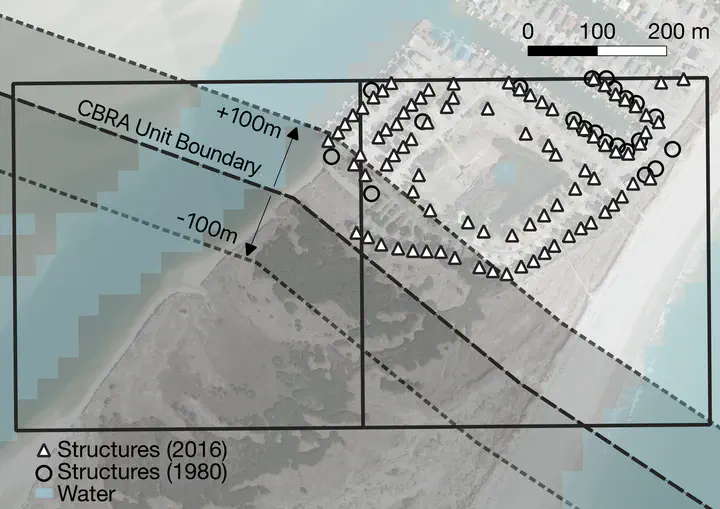Removing Federal Subsidies from High-Hazard Coastal Areas Slows Development

Abstract
The federal government has implemented a variety of policies and subsidies that help coastal development remain viable, including investments in risk reduction measures, subsidized flood insurance, and post-disaster assistance. In this study, we explore how the removal of federal subsidies impacts coastal development patterns by measuring the causal effect of the U.S. Coastal Barrier Resources Act (CBRA) on building activity. Implemented in 1982, CBRA withdrew eligibility for federal funding for infrastructure, post-disaster assistance, and subsidized flood insurance along designated sections of coastal barriers (``CBRA units''). Using a novel built structures dataset, we employ a spatial regression discontinuity design to compare development rates inside and outside CBRA units in 1980 and 2016. We demonstrate that CBRA has caused significant reductions in development activity, with development rates in CBRA more than 75% lower than areas outside CBRA. Our findings suggest that policies like CBRA can be effective at slowing development in other sensitive or hazardous areas, and could help to preserve natural environments for habitat conservation and climate adaptation purposes.